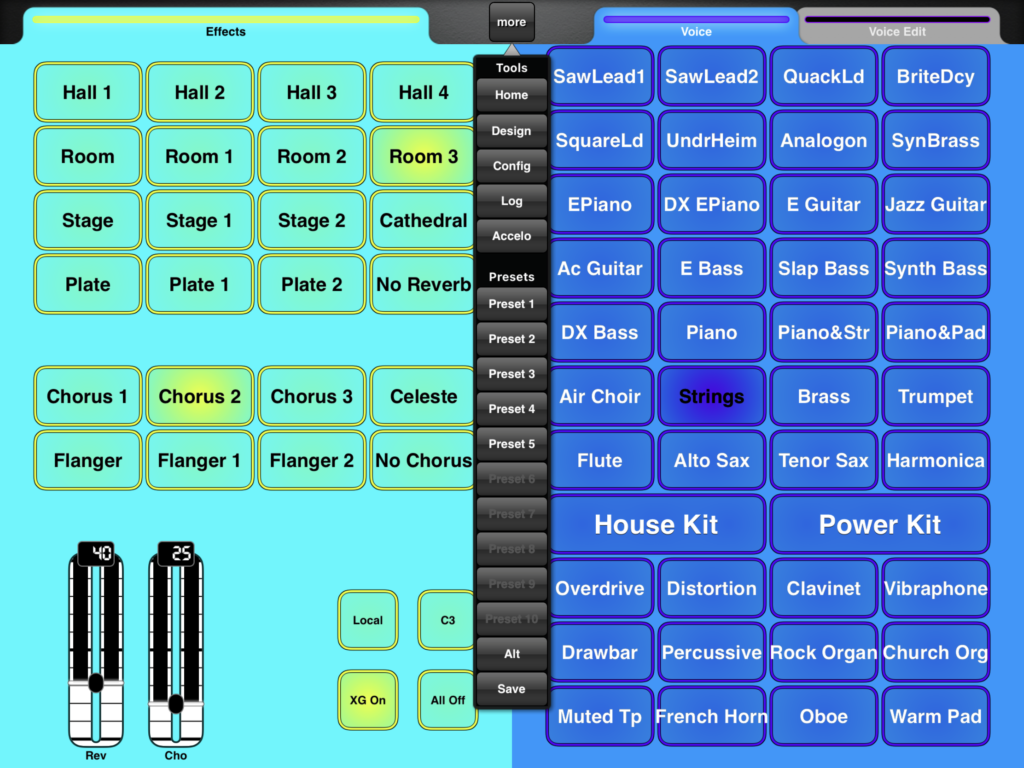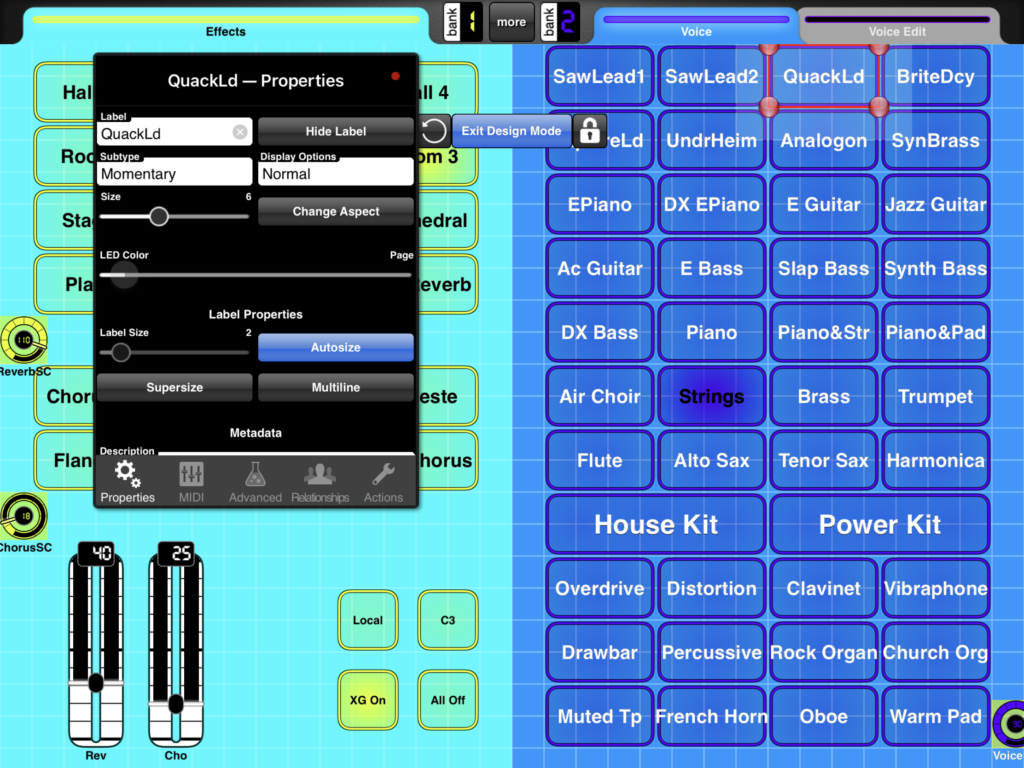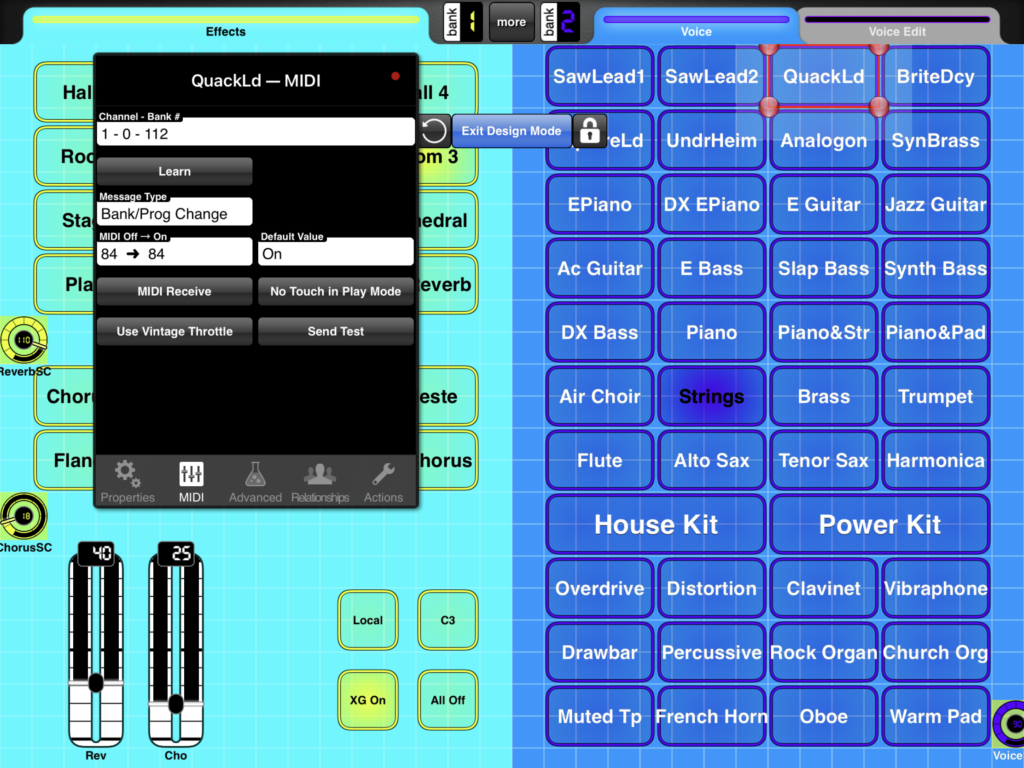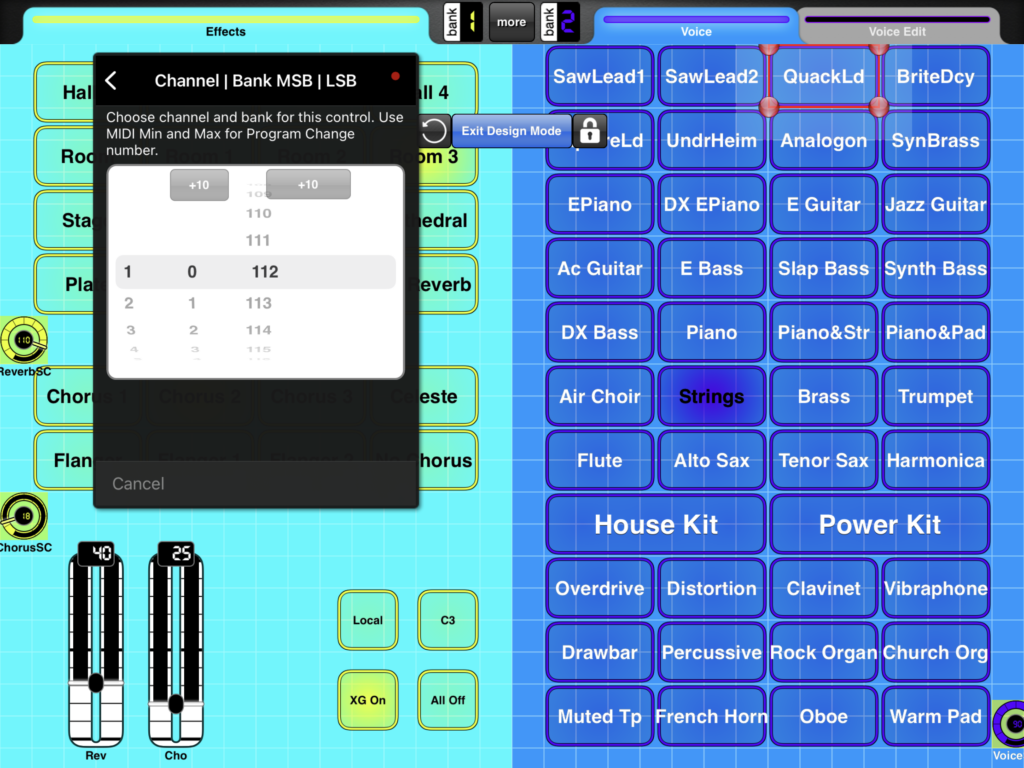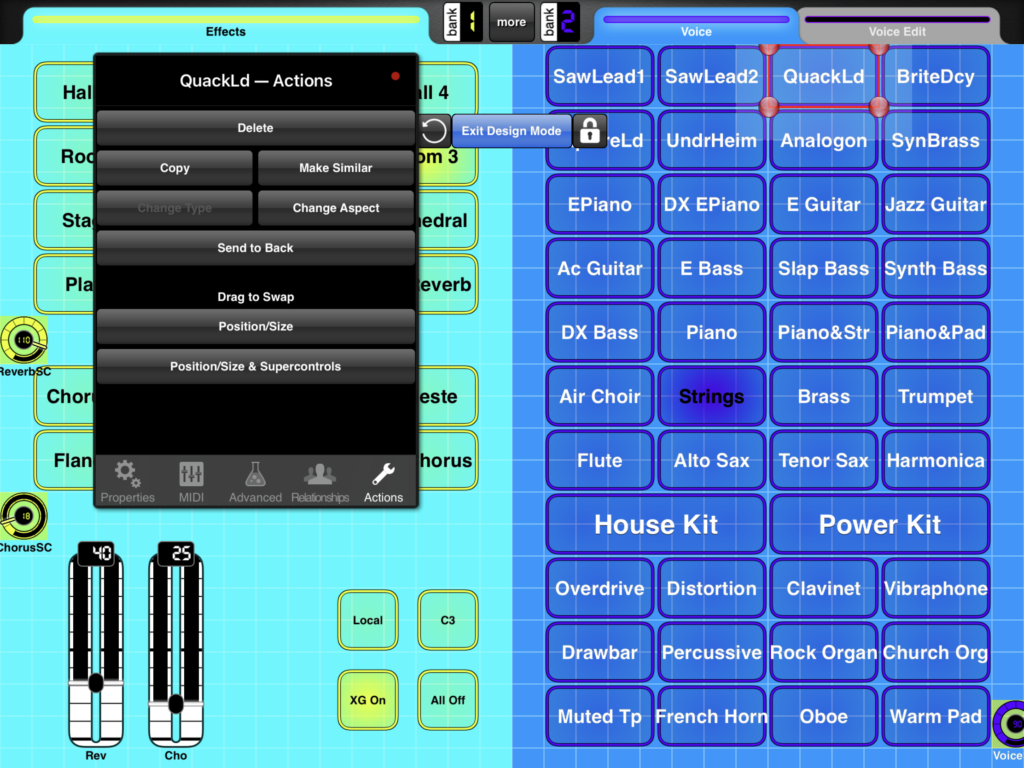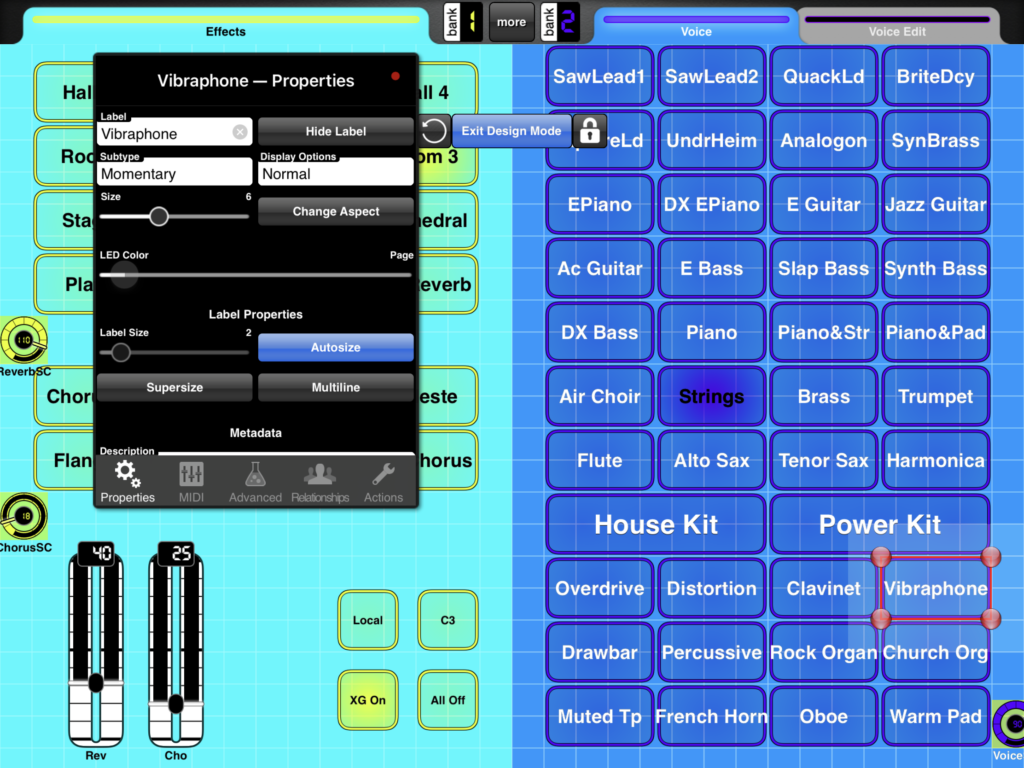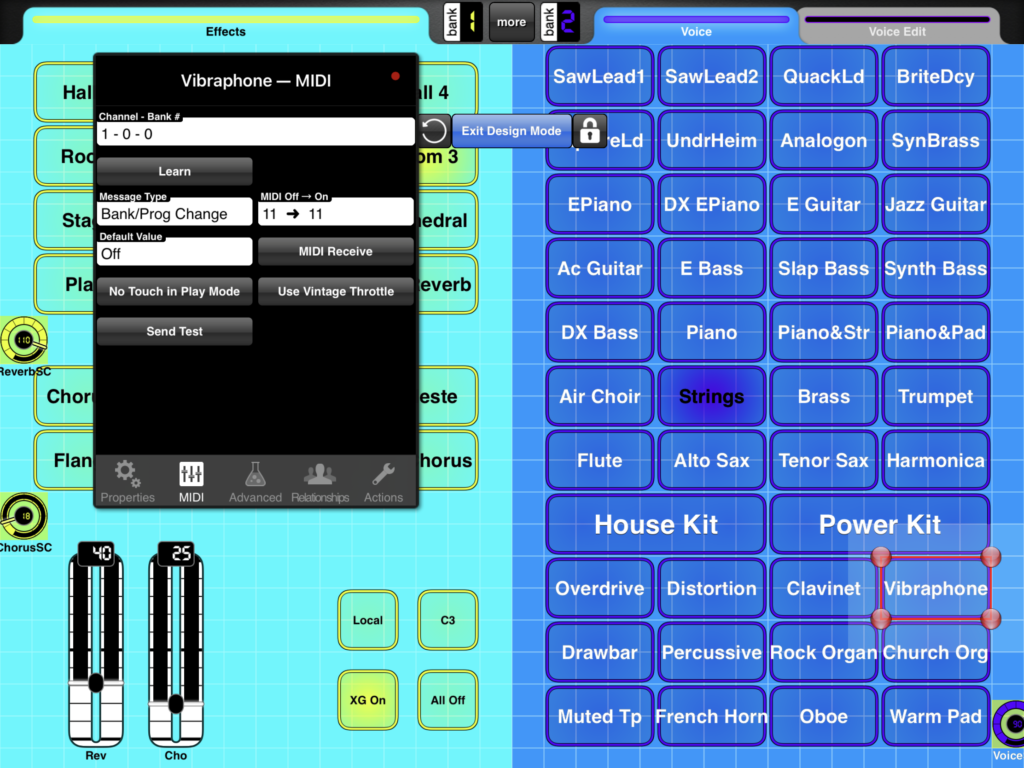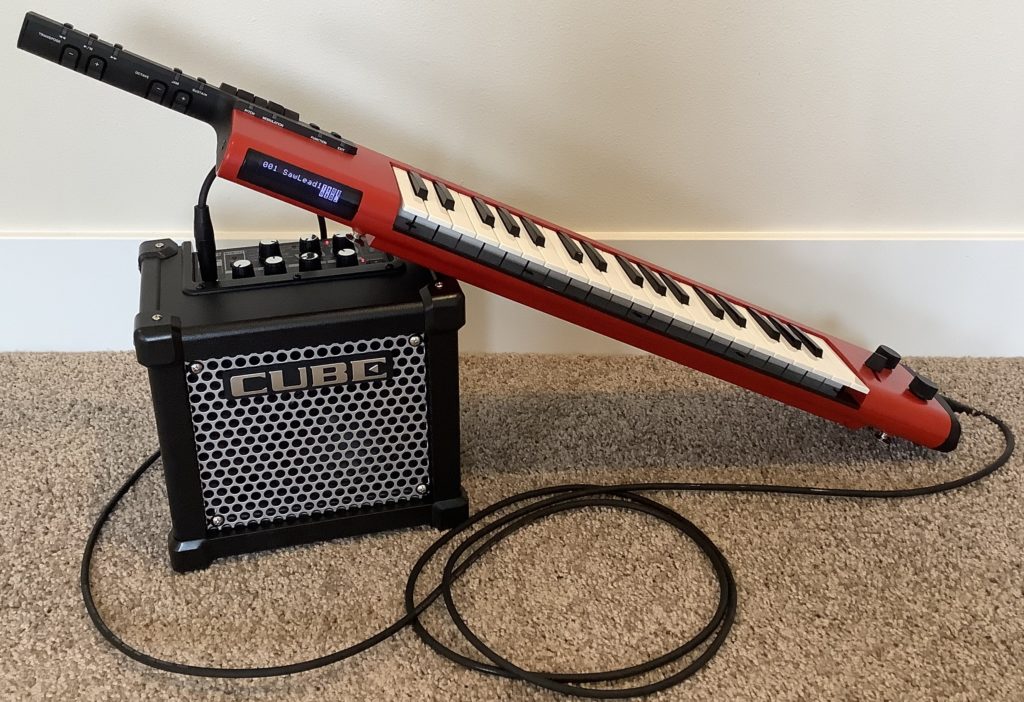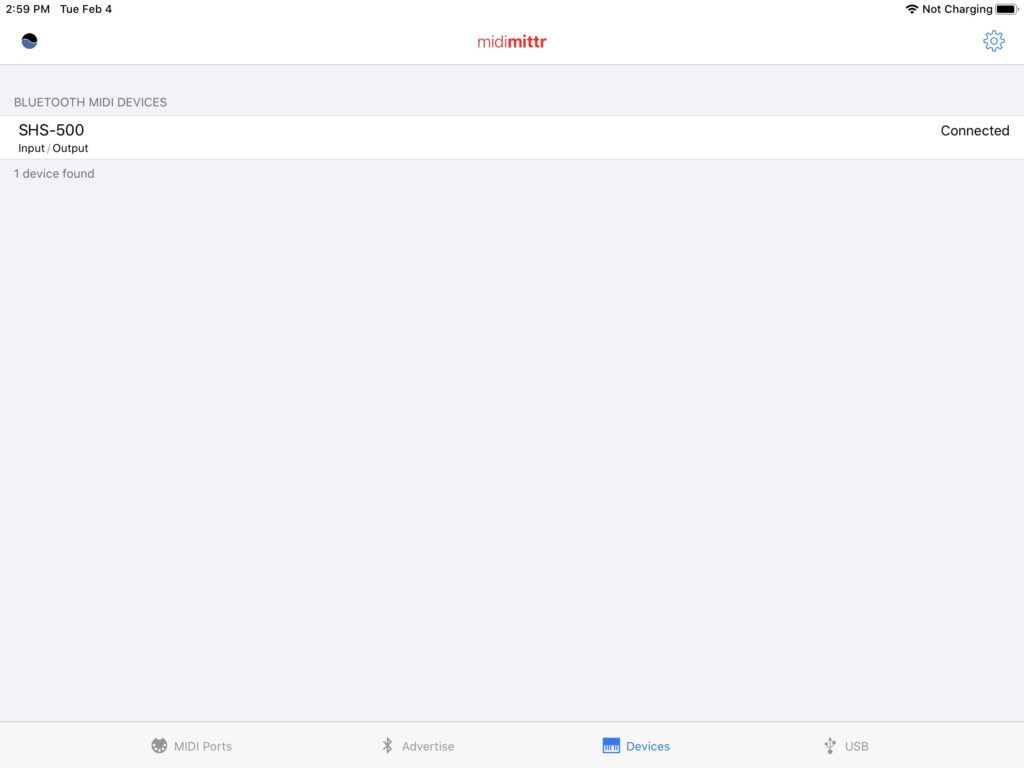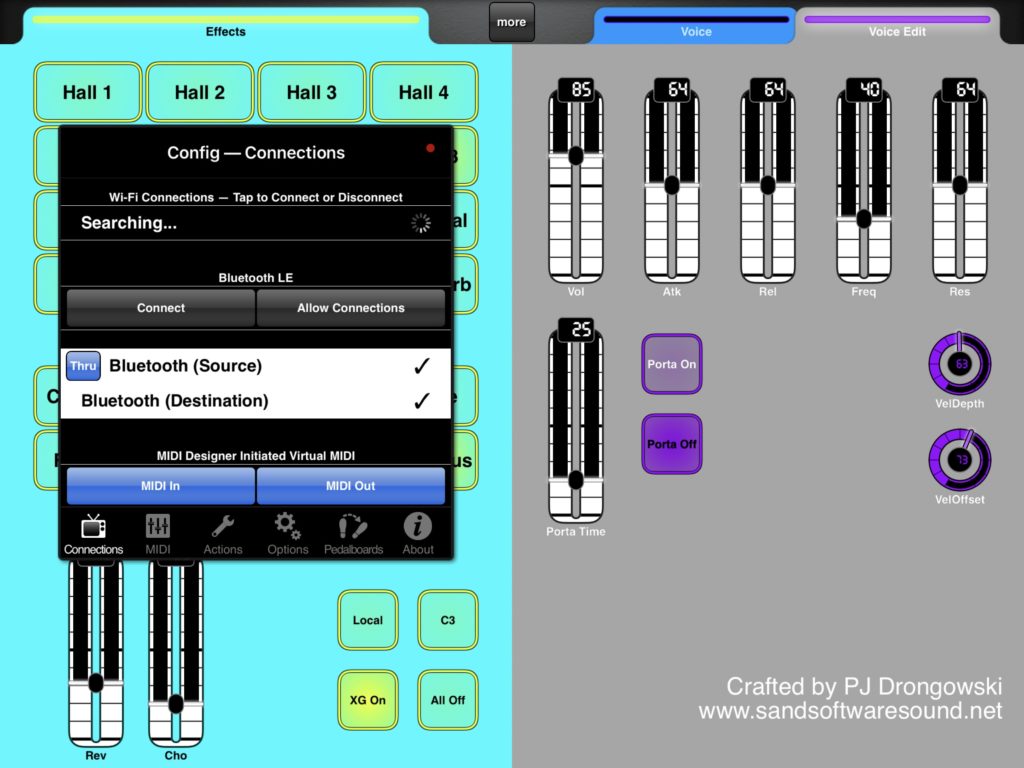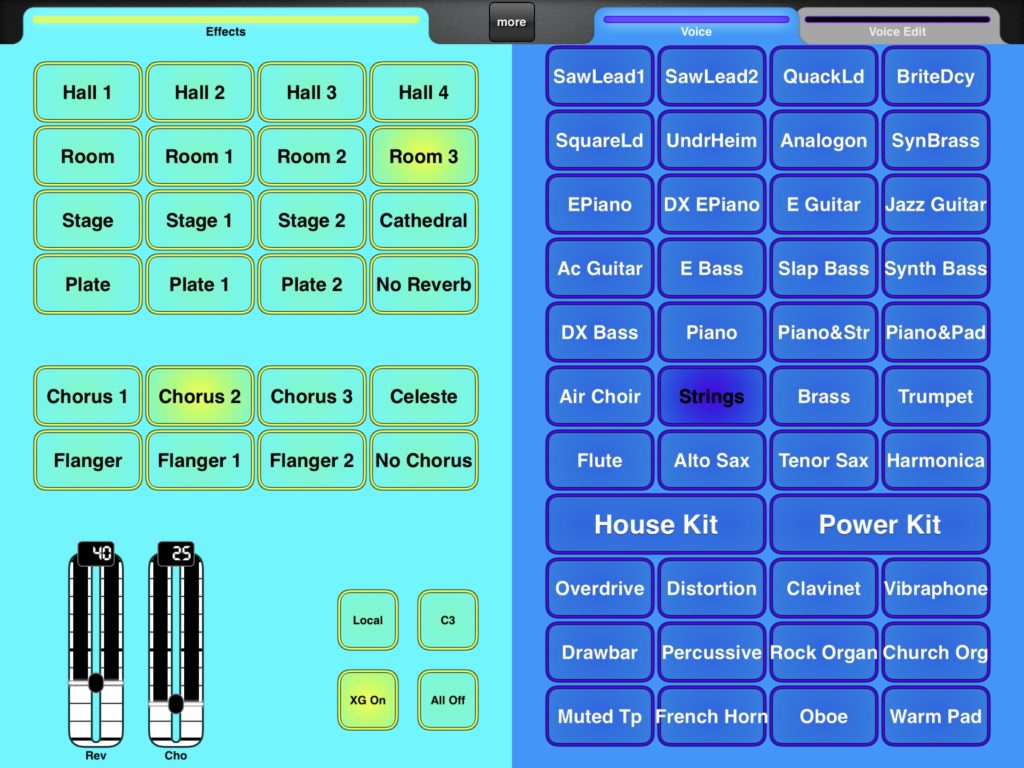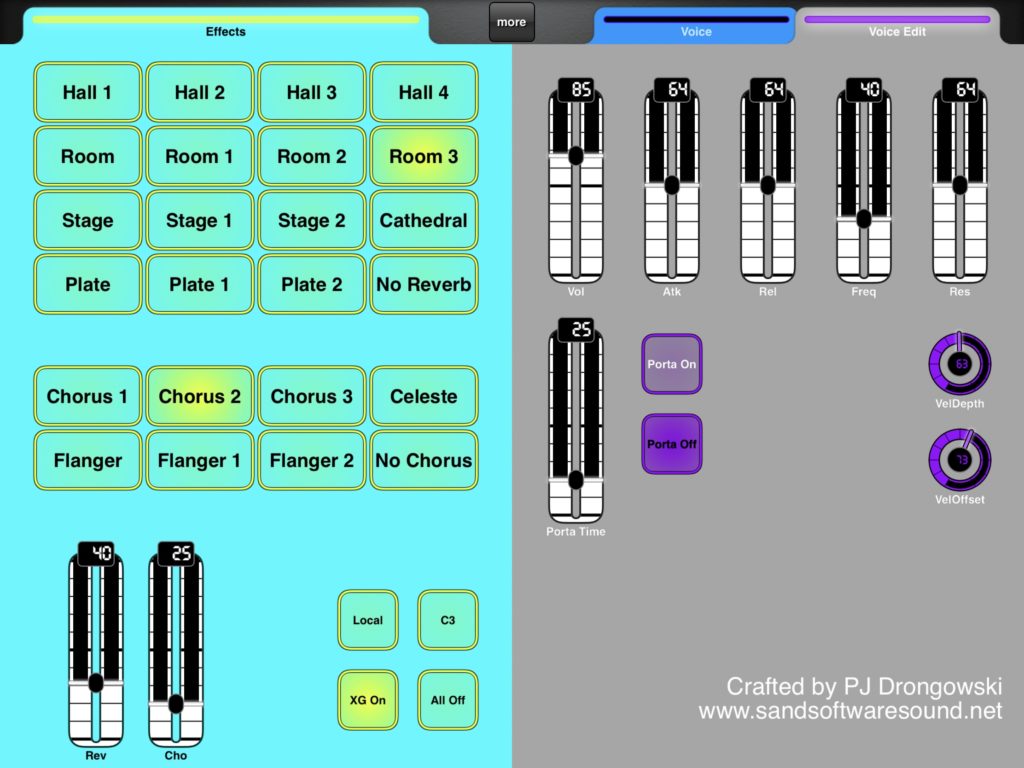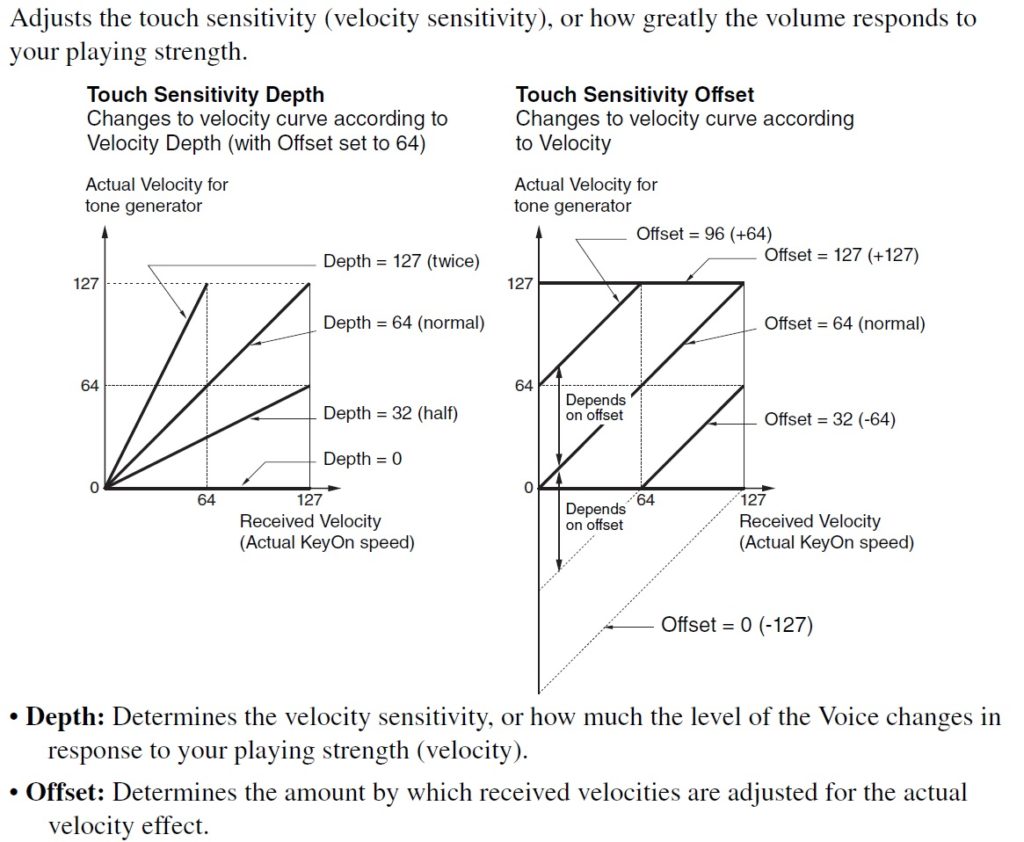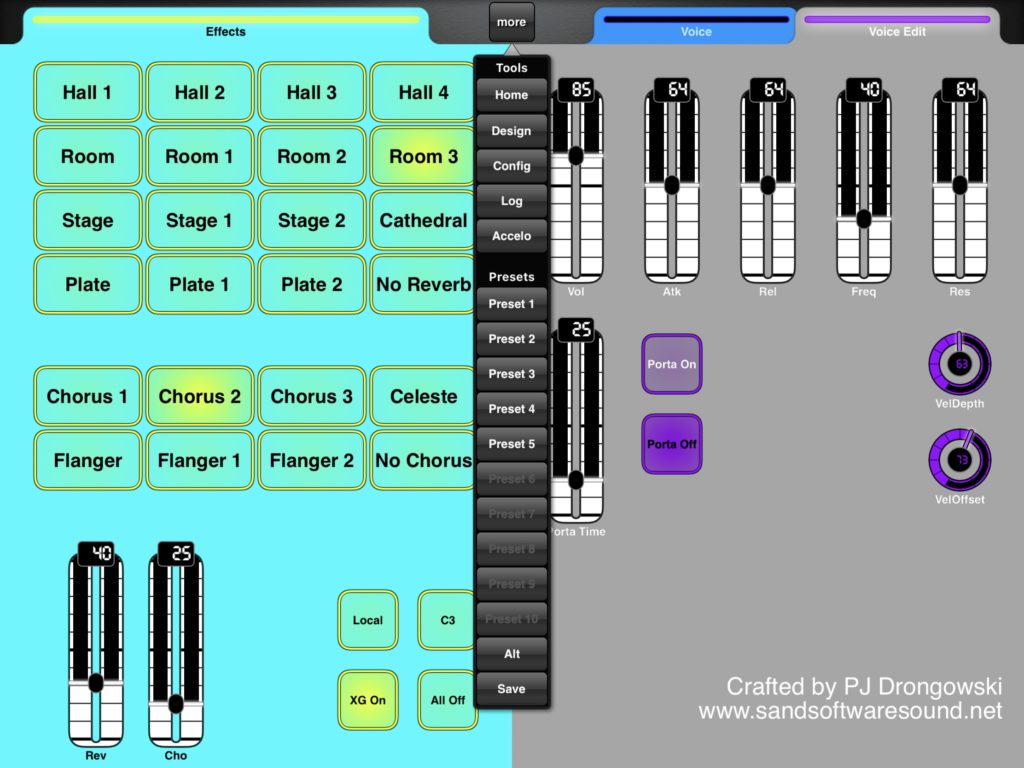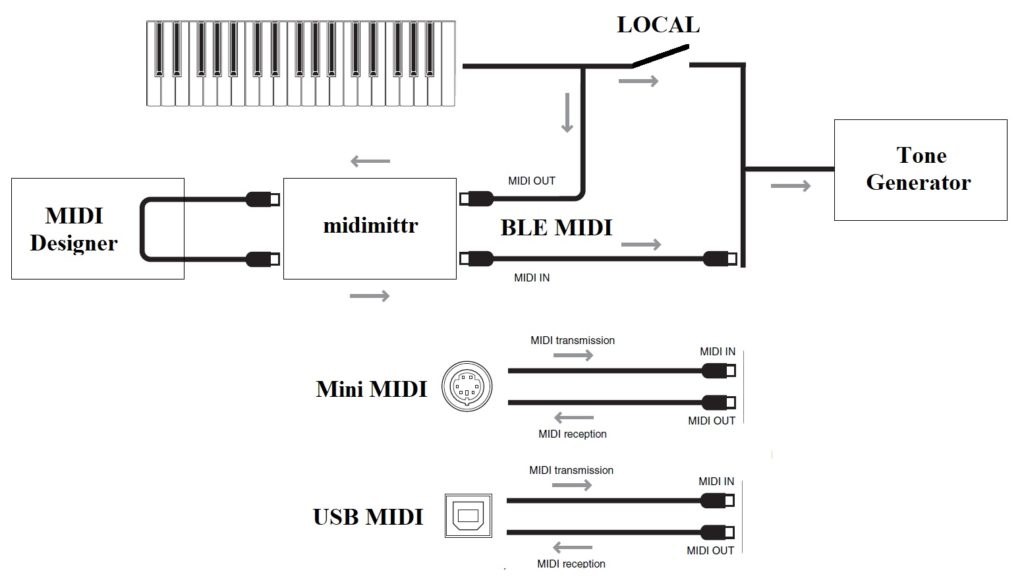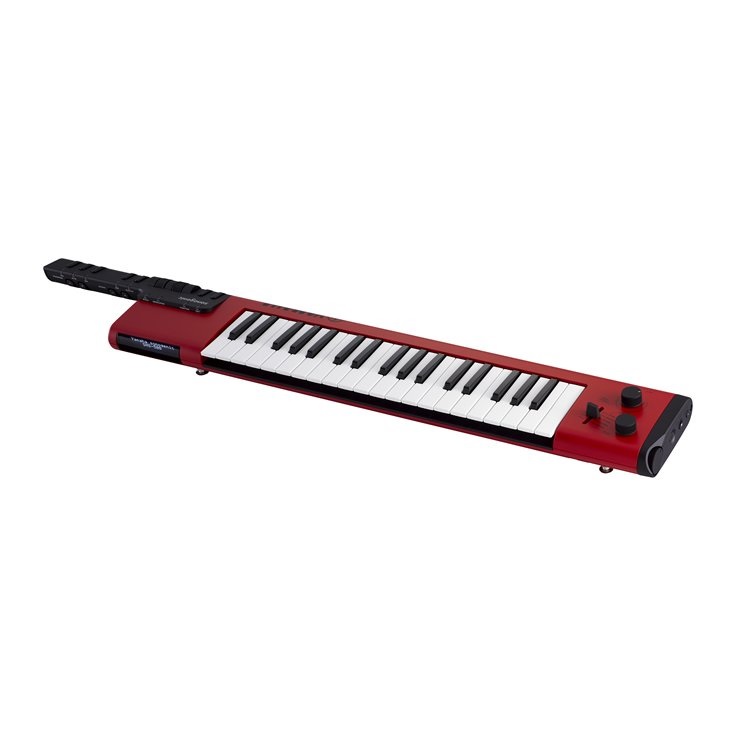Before taking a screwdriver and soldering iron to the A50 (Ahem), I’d better write a short review first. 🙂
The Yamaha PSS series keyboards are inexpensive, entry-level instruments which are super lightweight, battery powered, portable and fun. The PSS line is like a small group of fantasy characters where each character has its own super-powers.
- PSS-E30: A musical game keyboard for younger kids.
- PSS-F30: “Honey, I shrunk the arranger” keyboard for people who want to play songs with an accompaniment.
- PSS-A50: A phrase-based music machine which records and speaks MIDI over USB to your DAW or other computer- or table-based music applications.
Last year, I reviewed the Yamaha PSS-E30 Remie and passed it along to our grandson as a Christmas gift. Remie is suitable for young kids, but even Mom and Dad have fun with the musical games.
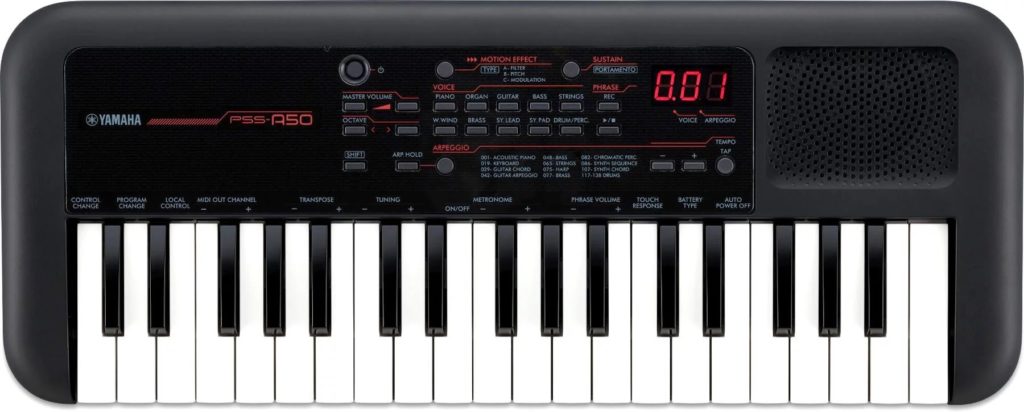
The PSS-A50 (henceforth “A50”) is aimed at people who want more flexibility than the fixed accompaniment styles in the PSS-F30. The A50 has 138 musical phrases — “arpeggios” in Yamaha-speak — that drive an in-built arpeggiator. Twenty-two arpeggios are drum patterns; the rest of the arpeggios are melodic, covering both instrument-specific riffs (strums, bass lines, chord comps) and general purpose phrases like up/down broken chords, etc.
Experienced Yamaha players have seen these arpeggios before. In fact, the A50 reminds me of the Yamaha Synth Arp & Drum Pad iOS application. Without getting into the details, you select a voice, select an arpeggio (“arp”), enable the arp, hit record, and go. If you check out Yamaha’s YouTube tutorials, you’ll see how easy it is to get started.
At this point, I suggest watching Keen On Keys excellent video. It covers all the basics, a brief teardown, and more. I won’t go into such details here. (This chap did a terrific job!) I learned quite a lot from this video including basic “how to use it” information.
Oh, how I long for such reviews in Electronic Music (once Keyboard mag), once again. Ken Hughes, where are you? After reading one of those old product reviews, you actually knew a little about playing the instrument. Now, pfffft!
The sounds
Let’s get down to brass tacks. Like Remie, you won’t get Yamahas top sounds. Shucks, it’s only $100 USD (street price).
Truth be told, even though I regarded the A50 as a candidate for mod projects, I wasn’t too wild about the sounds that I heard in on-line demos. I was hesitant to buy one. Once I got the A50 under my fingers, however, I warmed up.
Basically, the A50 and Remie samples and synth engine are at the same level. The A50 adds touch sensitivity and that, I suspect, makes the difference. Sure, the piano (for example) is uni-dimensional and you can hear it play the same sample louder or softer depending upon strike velocity. The overall effect is more musical, however. Weird how that works?!
The A50 audio OUT is mono. Reverb seems to be the only system effect. Even Yamaha’s cheapest chip implementations have chorus, so it may take a little MIDI magic to unlock that door. The whole sound can be sweetened by out-board effects like maybe a guitar pedal (e.g., TC Electronic Hall of Fame reverb) or a spatializer. I slung an A50 beat through the Korg Volca Mix stereo width and compression effects and got a rather nice result. The Volca Mix Hi/Lo Cut let me isolate the tops and kick, too. I strongly recommend adding external effects.
The A50 motion effects let you juice up your performances. I’m still exploring the motion effects and I’m glad to have them. The motion effects add a way to vary the sound during performance, avoiding a uni-dimensional sound. You get filter fun, pitch bends, slicing and all sorts of sonic mayhem. A few effect types would be good for Hawaiian pedal steel. 🙂 It would be nice to leave the auto wah ON in order to play two-handed funk — a small quibble.
The A50 size, features and price invite comparison against the Yamaha SHS-300 and SHS-500 Sonogenic. Unless you really want the keytar format, I don’t see the value in the SHS-300 versus the A50. I will bet dollars to donuts that the SHS-300 is based on the same chip and samples as the A50. Personally, phrase recording is more fun and creative than a pretend, low-budget, cheap build keytar. Speaker quality is probably a wash between the two and the A50 puts out 1.5W versus 0.7W.
The A50 against the SHS-500 is another story. The SHS-500 voices are definitely better quality. Although the SHS-500 LINE OUT is mono, you can look to its PHONE OUT for stereo. The SHS-500 has PSR E-series DSP effects, three forms of MIDI (USB, 5-pin, and Bluetooth), a General MIDI sound set (available via MIDI only), and jam mode integration with Chord Tracker. The SHS-500 beats the A50 on sound. On the other hand, I prefer the A50’s speaker versus the SHS-500. Of course, the SHS-500 is mainly for playing and doesn’t have an arpeggiator or recorder.
Build quality
One big factor is build quality. The SHS-500 is a solid instrument. The SHS-300 and A50 are cheap. Even though Yamaha specs call out “37 HQ (High Quality) mini keys” for all three keyboards, only the SHS-500 is up to the same quality as the Yamaha Reface series. Yamaha marketing may claim otherwise, but you can feel the difference. The Reface and SHS-500 will stand up to abuse — the SHS-300 and A50, not so much.
As to A50 build quality, the electronic boards and cabling look up to snuff. EMI shielding is absent. Audio quality on battery power or external USB power adapter is good and is reasonably quiet. Powered by my HP desktop, the A50 is susceptible to digital schmutz and produces loud noise through its audio out. One could put blame on the desktop, but nearly all computer switching power supplies are dreadfully noisy. USB powered instruments need better filtering on USB power rails.
In use
I want to use the A50 as a looper: put down a rhythm line and a bass, then jam. It takes a little bit of practice to make glitch-free loops. I wish the A50 applied “measure quantize” to recordings, that is, trim recordings to a clean measure timing boundary. Right now, you have to turn off recording by feel and hope you get it right.
While horsing around with MIDI (another subject for another day), I noticed that the A50 has four parts, each on its own MIDI channel:
- Keyboard voice: Live, real time performance (Default: channel 1)
- Arpeggio sequence: Live, real time arpeggiation (Default: channel 2)
- Recorded keyboard: Recorded keyboard performance (Default: channel 3)
- Recorded arpeggio sequence: Recorded arpeggio (Default: channel 4)
Hmmm, this makes me wonder if I can layer up to four parts? So far, I can layer 3 distinct musical parts. The fourth part is still elusive.
The main problem is no overdub. It is possible to record two parts at once: arpeggio plus keyboard performance. Thus, you can lay down a drum pattern (arpeggio) and a bass line (by hand). Then, loop the playback and play over the top. Seems like I should be able to add a live arpeggio to the stack.
Anyhow, I found this video (“Yamaha PSS A50 – Jazz Multi Track”) to be instructive. The trick is to get the arpeggio going, select a different instrument, arm record, and play on the first beat. Here is the procedure:
- Select drum voice (e.g., voice 39).
- Turn the arpeggiator ON.
- Select the arpeggio type (e.g., arpeggio 125).
- Hold a key to start the arpeggiator.
- Press ARP.HOLD to keep the drum pattern running.
- Select a bass voice (e.g., voice 14).
- Press REC to arm recording.
- Play the bass line over the drum pattern. Start playing in time with the drum pattern.
- Press REC to stop recording.
- Turn the arpeggiator OFF.
- Select a piano voice (e.g., voice 2).
- Press SHIFT+PLAY to start a looping playback.
- Jam over the playback.
- Press STOP to stop playback.
Recording doesn’t start until you begin to play the bass line. That locks the bass to the drum pattern. You need to stop recording just before the next loop iteration begins.
If you need some jazzy chords, try: GM7/E, Fm7/B, FM7/D, Em7/A (also notated as Em9, Bm11, Dm9, Am11).
Doggone it, seems like I should be able to layer live arpeggiator into that mix! I’ll keep trying.
Update: Practice makes perfect. Yes, you can get four lines going. I recorded drum and electric piano following the procedure above. With the recorded parts playing, I started a looping bass arpeggio. Finally, I solo’d over the three running parts. Neat, and as complex as you might want for a little practice jam.
Questions
As I begin to explore the A50 MIDI implementation, there are a number of unanswered questions. First and foremost, can I save and restore recorded MIDI data? Does the A50 respond to SysEx messages for reverb and chorus type? Can I drive the A50 with the old Synth Arp and Drum Pad application and make use of its range of arpeggios? Can I load my own simple backing tracks into the A50’s recorder memory?
The final word
After my initial reluctance, I’m glad that I bought the PSS-A50. Apparently, some folks aren’t so happy as A50s turn up as Open Box items quite frequently. Even though $100 is not much, you can save a few extra bucks if you’re willing to buy an open box item. Given the build quality, you might not want to chance it, tho’.
The A50 does not have a full General MIDI sound set. The sound set is close enough for rock and roll, however. Here is an MP3 of the A50 in action (Traffic’s Feelin’ Alright). Wish I could play that piano solo at the end …
Interested in more PSS-A50 content? Check out these posts:
- Yamaha PSS-A50 MIDI notes
- Yamaha PSS-A60 MIDI limitations
- Yamaha PSS-A50 Motion Effects
- Yamaha PSS-A50: Look inside
- PSS-A50: Power to the people
- PSS modding: A few ideas
- Modding the PSS series
Copyright © 2021 Paul J. Drongowski

